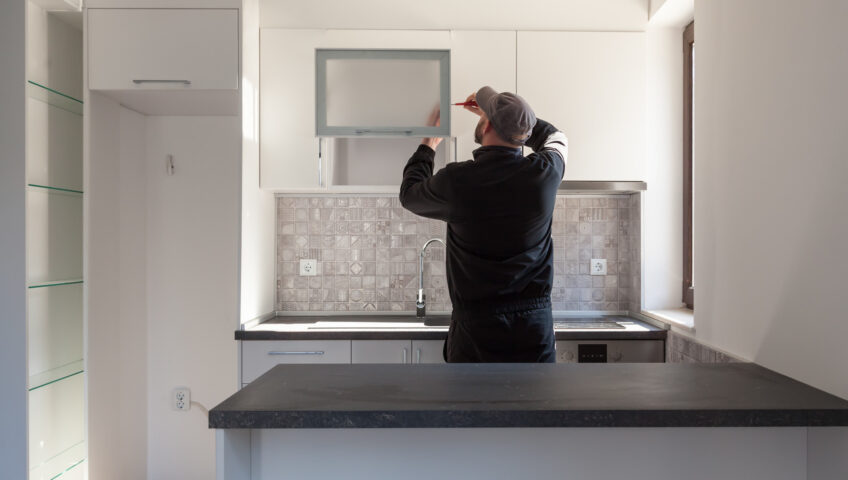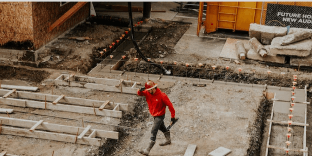
Home Improvement Projects: Assessing the Possibility of Converting Walls into Doorways in Several Types of Homes
Converting walls into doorways is a transformative home improvement project that can significantly enhance the functionality and aesthetic appeal of a living space. Whether you’re looking to improve accessibility, create better flow between rooms, or simply update the layout of your home, assessing the feasibility of such a project is crucial. This comprehensive guide will explore the essential factors to consider when converting walls into doorways, ensuring a seamless and safe transformation.

Understanding Wall Types and Structures
The first step in assessing the possibility of converting a wall into a doorway is understanding the type of wall you are dealing with. Walls in homes can generally be categorized as either load bearing or non-load bearing.
Load bearing walls support the weight of the structure above them and transfer that load down to the foundation. Removing or altering these walls without proper support can compromise the structure of the entire building. Non-load bearing walls, on the other hand, primarily serve as partitions and do not support any structural weight.
Identifying whether a wall is load-bearing or not is a critical task that requires the expertise of a qualified contractor. Key indicators include the wall’s alignment with joists or beams, its position within the floor plan, and the materials used in its construction.

Evaluating the Existing Home Layout
The existing layout of your home plays a significant role in determining the possibility of converting walls into doorways. Each type of home improvement project —be it a single-family house, townhouse, or apartment—presents unique challenges and opportunities.
In single-family homes, there is often more flexibility for structural modifications due to fewer shared walls and typically larger spaces. Townhouses, however, may have shared walls with neighboring units, requiring careful planning and coordination. Apartments, particularly those in high-rise buildings, may have strict regulations and structural limitations that need to be considered.
Evaluating the current layout involves understanding the flow of the space, the placement of utilities, and the potential impact on the overall design. Creating a detailed floor plan that includes existing walls, doors, windows, and furniture can help visualize the changes and prevent issues.
Considering Structural Modifications
Once you have identified the type of wall and evaluated the home layout, the next step is to consider the structural modifications required to convert the wall into a doorway. This involves planning for the necessary support systems if the wall is load bearing and ensuring that the new doorway will not compromise the integrity of the building’s structure.
For load bearing walls, options for support include installing a header beam above the new doorway, which redistributes the load to adjacent walls or posts. The size and type of header beam depend on the span of the opening and the weight it needs to support. Consulting with a qualified contractor is essential to determine the appropriate solution and ensure compliance with building codes.
Non-load-bearing walls are generally easier to modify, but it is still important to check for any utilities, such as electrical wiring, plumbing, or HVAC ducts, that may run through the wall. These utilities will need to be rerouted, which adds complexity to the project.
Design and Aesthetic Considerations
In addition to structural considerations, the design and aesthetics of the new doorway play a vital role in the overall success of the home improvement project. The doorway should complement the existing architectural style and enhance the visual appeal of the space.
Consider the following design elements when planning your doorway conversion:
- Door Style: We use black anodized aluminum sliding doors, available in multiple configurations. They can stack to the right, to the left, or split in the middle. This low-profile design provides a safe transition as well as that sleek look you want. All doors come with double pane, insulated, low-E glass. And an insulated aluminum door panel frame, as well as a double sweep at the bottom of each panel (this prevents as much air and dust transmittance as possible.
- Trim and Finishes: The trim and finishes around the new doorway should be consistent with the rest of the home. This includes selecting appropriate moldings, paint colors, and hardware that blend seamlessly with the existing decor. All steel and brass rolling hardware brings you operational reliability for years to come.
- Lighting: Ensure that the new doorway enhances the natural light flow within the space. Consider adding sidelights or transom windows above the door to maximize light transfer and create a more open feel.
- Accessibility: If improving accessibility is a priority, ensure that the doorway meets the necessary width and height requirements. This is particularly important for accommodating mobility aids such as wheelchairs or walkers.
Executing the Project
With a thorough assessment and detailed plan in place, it’s time to execute the project. Hiring experienced professionals, such as a licensed contractor and maybe a structural engineer, is crucial to ensure the work is done safely and to code.
The home improvement project typically begins with preparing the site, which may involve removing existing finishes, relocating utilities, and setting up temporary supports if needed. Once the site is ready, the wall can be carefully cut and removed to create the new doorway opening.
Installing the necessary support structures, such as header beams for load bearing walls, is the next step. Precision and attention to detail are essential to ensure the new supports are correctly installed and secure. Following the structural modifications, the new doorway can be framed, and finishes such as drywall, trim, and paint can be applied to complete the transformation.
Long-Term Maintenance and Considerations
Converting a wall into a doorway can a significant project, and maintaining the integrity and aesthetics of the new space is essential for long-term satisfaction. Regular maintenance tasks include inspecting the structural supports for any signs of wear or damage, ensuring that door hardware functions correctly, and keeping the area clean and well-maintained.
Additionally, consider the potential future implications of your renovation. While the new doorway may enhance the current layout, future homeowners may have different preferences. Maintaining flexibility in your design by using removable partitions or versatile door styles can help accommodate changing needs and preferences.

FAQs
What support systems are needed for converting a load bearing wall into a doorway?
Installing a header beam above the new doorway is a common support system. The size and type of header depend on the span of the opening and the weight it needs to support. Consulting with a qualified contractor is essential for proper planning.
What challenges might I face when converting walls into doorways in apartments?
Apartments, especially in high-rise buildings, may have strict regulations and structural limitations. Additionally, shared walls and utilities may complicate the project, requiring careful planning and coordination.
What are some accessibility considerations for new doorways?
Ensure the doorway meets width and height requirements to accommodate mobility aids such as wheelchairs or walkers. This is particularly important for improving accessibility within the home.
How do I maintain the new doorway and surrounding area?
Regular maintenance tasks include inspecting structural supports, ensuring door hardware functions correctly, and keeping the area clean. Consider future preferences and maintain flexibility in your design for potential modifications.
Enhancing Your Home with Thoughtful Transformations
Converting walls into doorways can significantly enhance the functionality and aesthetic appeal of your home. By thoroughly assessing the possibility of conversion, understanding the structural implications, and focusing on thoughtful design, you can achieve a seamless and safe transformation. Whether you’re aiming to improve accessibility, create better flow, or update your home’s layout, careful planning and execution are key to a successful project. Embrace the potential of your living space and enjoy the benefits of a well-designed and functional home.
Looking to turn an exterior wall into a light-loving doorway in your home? Let the Pros help. Reach out to us at 469-813-8143, or through our contact form.


